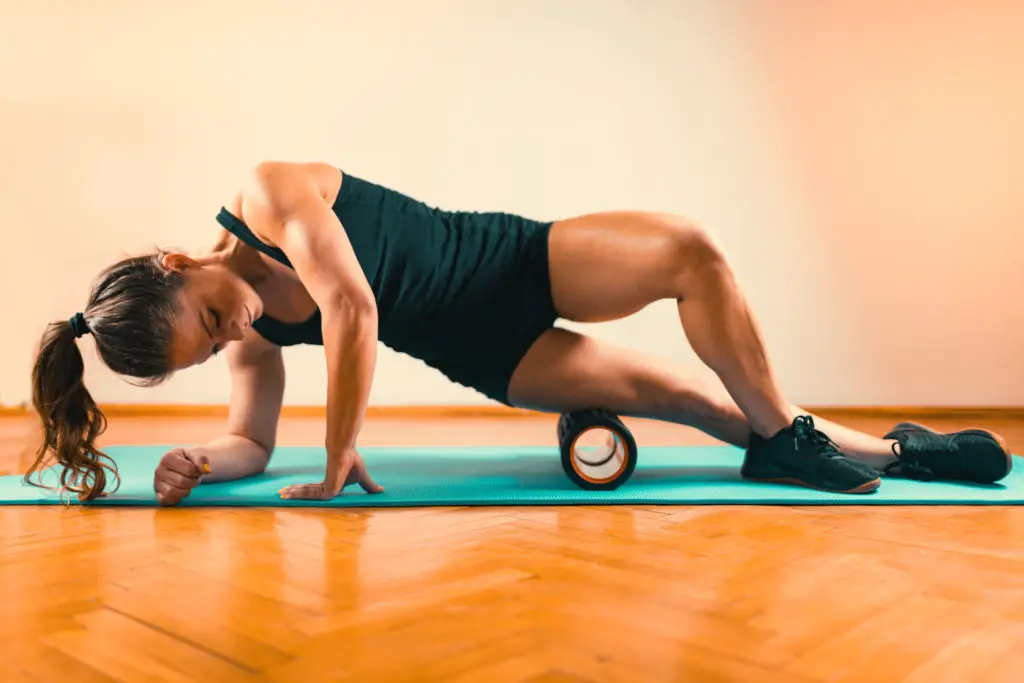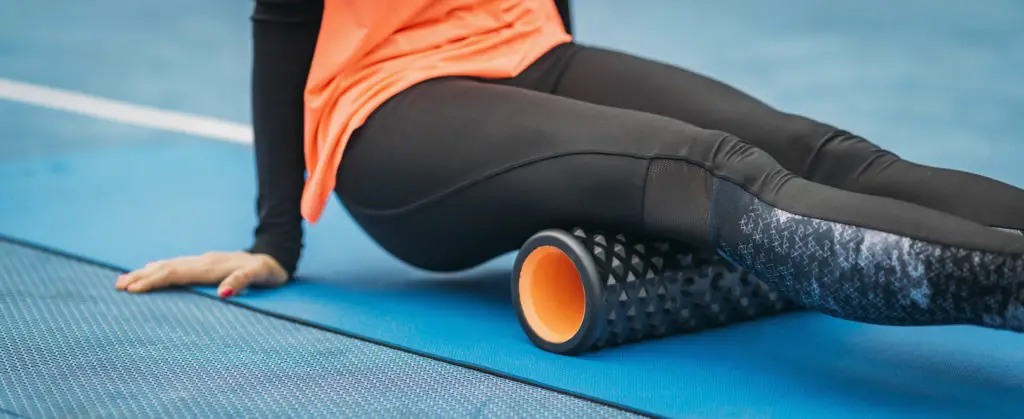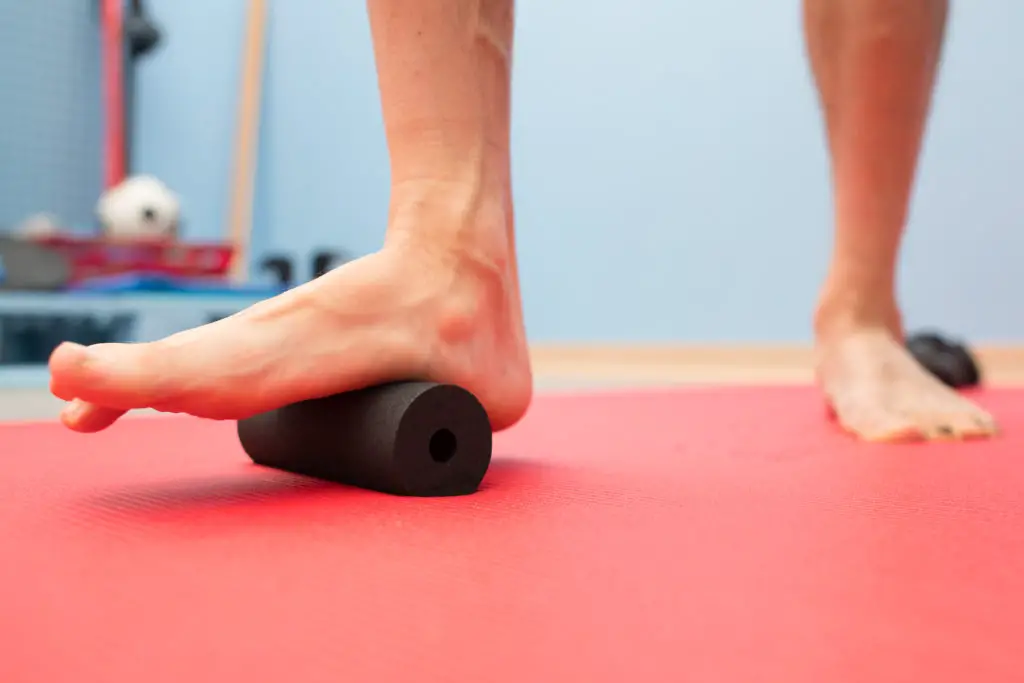
Foam rolling is a staple of any post-workout routine, but it can be confusing to figure out when and if you are doing it right or not. There is conflicting advice on when and where you should not foam roll, which can be frustrating!
Various medical conditions or states can make foam rolling harmful to your body, such as if you’re pregnant; have open wounds and injuries; have skin, skeletal, or muscular conditions; have diabetes, or have difficulty getting up.
Several practices can also make foam rolling dangerous in addition to using a foam roller with these conditions. In the remainder of this article, we’ll cover when it is not okay to foam roll and best practices to remember for when it is okay.
Page Contents
When Should You Not Foam Roll?
Whether you are new to foam rolling or are a foam rolling veteran, here are some times when you should not foam roll:
If You Are Pregnant
Some sources say that foam rolling your lower back while pregnant may reduce soreness in that area, but you should not be foam rolling your lower back at all. Trying to foam roll while pregnant can put pressure on your upper body and spine, and you are not supposed to be on your back later in pregnancy, anyway.
Instead of using a foam roller for your pain, use a massage stick instead, such as this Original Tiger Tail Massage Stick. You won’t have to lay down using this, and you can use it on your lower back.
If You Have Open Wounds or Injuries
Foam rolling while you have open wounds on parts of your body will not only slow down the healing process, but it can also make your injuries worse and may lead to infection, especially if your foam roll hasn’t been disinfected.
You do not have to avoid working out at all while injured, though. Just be gentle near the injured area and do not push yourself too hard. And bandage up your injuries too!
If You Have Eczema or Any Other Skin Condition
Much like how foam rolling with an open injury can worsen the injury, foam rolling with a skin condition like eczema can exacerbate it and cause you a significant amount of discomfort. Depending on what skin condition you have, foam rolling can even break the skin and lead to infection.
Instead, try doing static stretches to work through any muscle tightness you may have. That will help you cool down while protecting your skin.
If You Have a Hard Time Getting Up
If you have a hard time getting up from a chair or the floor, then you will have difficulty moving a foam roller around the parts of the body you exercise, especially if you like to foam roll while lying down.
Instead, use static stretching to cool down from a workout. While lying or sitting down, stretch out the muscles you worked out to get them to relax. It is more helpful and most definitely safer for you.
If You Have Diabetes
Your body, including your muscles, store a chemical called glycogen, which provides short term energy while exercising. However, when foam rolling, glycogen can get released into the bloodstream, thus increasing blood sugar levels in diabetic individuals.
Instead, take control of your blood sugar by doing simple stretches or eating a post-workout snack. Remember to check your glucose levels before and after physical activity, too.
If You Have a Skeletal or Muscular Condition
Foam rolling is intended to relax your muscles and can aggravate a skeletal or muscular disorder as a result.
If you want to exercise (which you should) and have a skeletal or muscular condition, do moderate workouts like walking or stretching. You do not even have to foam roll afterward.
Can Foam Rolling Be Harmful?

As you may have guessed from the previous section, foam rolling can be harmful if you do so when you should not or if you do not foam roll properly.
Foam rolling itself is never harmful as long as you do it correctly. In fact, studies show that foam rolling after you work out can reduce muscle tension and allow your muscles to take in more water and other necessities.
However, there are parts of your body that you should never foam roll regardless of your physical state, and for good reason, too. Never foam roll parts of your body that:
- Have muscles you didn’t use while working out: If you didn’t use a muscle during your workout, it does not need to be foam rolled after. In fact, foam rolling an unused muscle can damage it and cause you excruciating pain.
- Have more bone than muscle: Bonier parts of your body have less muscle tissue than the rest, and thus make the bones vulnerable to foam rolling as well. If you want to massage those parts of your body, though, try using a tennis ball. It’ll reach those spots without potential damage to those parts of your body.
- Consist of joints: Smaller joints in places such as your knee can be damaged by foam rolling due to the pressure it puts on them to expand. Avoid those areas at all costs!
- Involve your IT band. Foam rolling your IT band is one of the worst mistakes you can make. It is not a muscle and therefore cannot expand from foam rolling. It also has a nerve that is very sensitive to pressure, and foam rolling worsens that pressure. Just do not do it, and instead, foam roll surrounding muscles.
Other Precautions for Foam Rolling

Here are some other things you should avoid doing while foam rolling:
- Do not focus on one part of your body for too long. You should only foam roll for one minute max on any specific part of your body. Too much focus can overstretch the muscle and lead to injury.
- Do not use too little or too much pressure. Foam rolling is supposed to feel uncomfortable, but it should not feel like an absolute nightmare. If foam rolling gives you a lot of pain, try applying less pressure. If you do not feel a thing, try applying more. It may take a few times to find the perfect amount of foam rolling pressure you need.
- Do not foam roll in only one direction. Foam rolling is not like painting; rolling in one direction will not relax the entirety of your muscle. Keep foam rolling in all directions to ensure maximum coverage for whichever muscle you are trying to relax.
- Do not start with your tightest spots. Starting with your tightest muscles when foam rolling is a form of overexertion. You wouldn’t warm up with an intense workout, after all! Start with the looser sports on your body, then gradually work your way towards the tight spots.
- Do not forget to drink water. Because foam rolling will cause your muscles to absorb more water and nutrients, your body will inevitably become dehydrated at some point during the process. Be sure to drink water before and after you foam roll to keep yourself hydrated, as it will help your body recover quicker.
Final Thoughts
And there you have it: when you should not foam roll, as well as some general safety guidelines for foam rolling to prevent injury and ensure maximum benefits from the foam roller.
Remember, though, that you know your body the best. If you don’t feel comfortable foam rolling, or if foam rolling does nothing for you, don’t do it; if foam rolling works for you with only the lightest of pressure, then do it. Every person is different, so what works for one may not work for another. It’s also worth consulting your doctor to see if foam rolling can benefit you and your physical health before starting to rely on it as a source for muscle relief.

